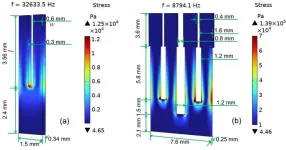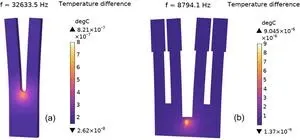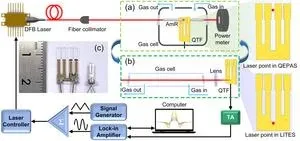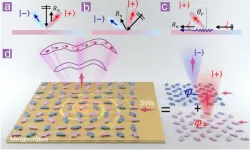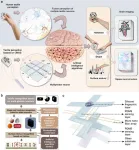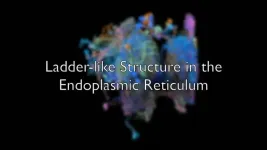A new publication from Opto-Electronic Advances; DOI 10.29026/oea.2025.240275, discusses A highly sensitive laser gas sensor based on a four-prong quartz tuning fork.
Trace gases, though have a volume fraction much less than 1% of the atmosphere, significantly impact various sectors. Despite their low concentration, typically between 10-12 to 10-6, gases like nitrogen oxides (NOx), sulfur dioxide (SO2), and greenhouse gases contribute to atmospheric pollution, a pressing global issue exacerbated by industrialization and urbanization. Moreover, detecting trace gases is crucial for industrial production, medical diagnosis, and fire prevention, underscoring the importance of advancing gas sensing technologies to foster a safer, healthier, and more sustainable environment.
In 2002, Tittel et al. proposed a gas sensing technology named quartz-enhanced photoacoustic spectroscopy (QEPAS), which uses a quartz tuning fork (QTF) instead of a microphone to detect the acoustic waves compared to traditional photoacoustic spectroscopy. QEPAS effectively mitigates the restrictions imposed by the acoustic resonance conditions on the structure and size of the gas chamber. The advantages of QEPAS technology lie on its wavelength independence, robustness against external noise, and enabling the analysis of trace gas samples in minuscule volumes. However, due to its contact-based measurement principle, QEPAS is not suitable for detecting corrosive or oxidizing gases, such as hydrogen chloride (HCl) and sulfur dioxide (SO2). In 2018, Ma et al. put forward a non-contact trace gas detection method called light-induced thermoelastic spectroscopy (LITES). Since the QTF can be isolated from the target gas, LITES is not only suitable for detecting corrosive gases but also finds applications in remote trace gas detection and combustion diagnostics. QEPAS and LITES are complementary techniques, each suited to different application scenarios. How to further improve the sensitivity of QEPAS and LITES sensing systems will be a key focus of subsequent research. Optimizing the design of the QTF will effectively enhance the detection performance of the sensor.
The authors of this article reported a novel four-prong QTF to address those issues. The bifurcation of the two prongs into four increases the area of stress concentration, thereby effectively improving the efficiency of acoustic wave detection and producing a large piezoelectric signal under the same excitation conditions. Additionally, it retains the advantages of the novel QTFs previously designed by the group, such as low resonant frequency, large prong gap and T-head. The study compared the performance of the four-prong QTF with that of the standard QTF in both QEPAS and LITES sensing systems.
The Euler-Bernoulli model and finite element analysis method were used to design and optimize the geometry of the four-prong QTF, as well as to compare the performance of both the four-prong QTF and the standard QTF in QEPAS and LITES technologies. The maximum stress of the four-prong QTF is over one order (11.1 times) of magnitude greater than that of the standard QTF, as shown in Fig. 1. The surface temperature difference is 7.95E-7°C for the standard QTF and 9.04E-6°C for the four-prong QTF, which is 11.4 times greater than that of the former, as depicted in Fig. 2.
To verify the detection performance of the four-prong QTF, QEPAS and LITES systems are constructed, with the setup diagram and photos of the QTFs shown in Fig. 3. The system selected acetylene (C2H2) as the target gas, selecting its absorption line at 1530.37 nm. Through optical excitation methods, the resonant frequencies of the standard QTF, the four-prong QTF, and the four-prong QTF equipped with acoustic resonance tubes were measured to be 32767.85 Hz, 7918.98 Hz, and 7918.53 Hz, respectively.
The detection sensitivity of the system based on the four-prong QTF is 460 ppb, and the signal-noise-ratio is 4.52 times higher than that of the standard QTF. Meanwhile, according to the results of Allan deviation, the detection sensitivity can be further improved to 96 ppb when the averaging time reaches 100 s.
This work optimizes the QTF, the core detector of LITES and QEPAS sensors, resulting in a significant improvement in sensitivity. It offers valuable insights for the advancement of quartz-enhanced spectroscopy.
Keywords: four-prong quartz tuning fork / C2H2 detection / quartz-enhanced photoacoustic spectroscopy / light-induced thermoelastic spectroscopy
# # # # # #
Yufei Ma received his PhD degree in physical electronics from Harbin Institute of Technology, China, in 2013. From September 2010 to September 2011, he spent time as a visiting scholar at Rice University, USA. Currently, he is a professor at Harbin Institute of Technology, China. He is the winner of National Outstanding Youth Science Fund. His research interests include optical sensors, trace gas detection, laser spectroscopy, solid-state laser and optoelectronics. He has published ~200 publications (including ~70 ESI hot/highly cited papers) and given more than 30 invited presentations at international conferences. He is the winner of 2021, 2022 and 2023 Most Cited Researchers from Elsevier. He serves as area editor for Elsevier Photoacoustics and Wiley Microwave and Optical Technology Letters. He serves as associate editor for Optica Optics Express, SPIE Optical Engineering, and Frontiers in Physics. He also serves as topical editor for Opto-Electronic Advances, CLP Chinese Optics Letters, MDPI Sensors and Applied Sciences.
# # # # # #
Opto-Electronic Advances (OEA) is a rapidly growing high-impact, open access, peer reviewed monthly SCI journal with an impact factor of 15.3 (Journal Citation Reports for IF2023). Since its launch in March 2018, OEA has been indexed in SCI, EI, DOAJ, Scopus, CA and ICI databases over the time, and expanded its Editorial Board to 34 members from 17 countries.
# # # # # #
More information: http://www.oejournal.org/oea
Editorial Board: http://www.oejournal.org/oea/editorialboard/list
All issues available in the online archive (http://www.oejournal.org/oea/archive).
Submissions to OEA may be made using ScholarOne (https://mc03.manuscriptcentral.com/oea).
ISSN: 2096-4579
CN: 51-1781/TN
Contact Us: oea@ioe.ac.cn
Twitter: @OptoElectronAdv (https://twitter.com/OptoElectronAdv?lang=en)
WeChat: OE_Journal
# # # # # #
Wang RQ, Qiao SD, He Y et al. Highly sensitive laser spectroscopy sensing based on a novel four-prong quartz tuning fork. Opto-Electron Adv 8, 240275 (2025). doi: 10.29026/oea.2025.240275
END
